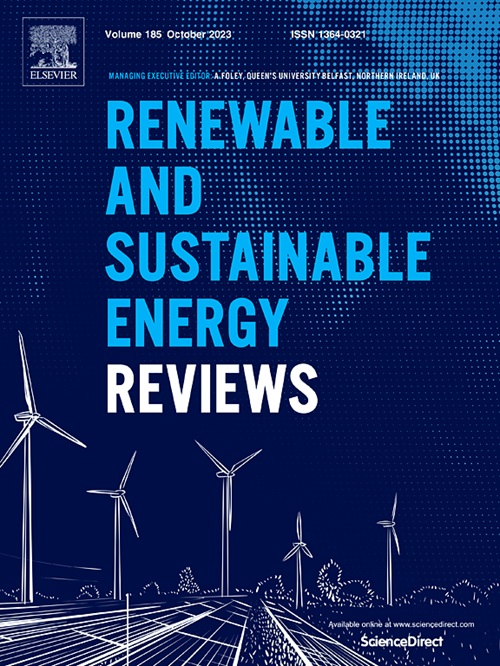Floating beyond limits: A review on engineered floatable hydrogel platforms and emerging sustainable applications
IF 16.3
1区 工程技术
Q1 ENERGY & FUELS
引用次数: 0
Abstract
Hydrogels, featuring tunable porous structures and efficient mass transport, are promising materials for floatable platforms that improve light absorption, enable continuous operation at gas-liquid interfaces, and protect encapsulated materials and enhance recycling efficiency. Floatable hydrogels notably maximize the use of sunlight at the air-liquid interface, significantly improving solar energy capture and efficiency in photocatalytic and photothermal processes. This review systematically summarizes recent advancements in floatable hydrogels, highlighting three major fabrication strategies: chemical cross-linking, pore structure regulation, and surface engineering. Chemical cross-linking is the predominant method, offering strong stability and versatility through monomer selection and cross-linking conditions, though quantitative buoyancy control remains challenging. Pore-structure regulation, including mechanical foaming, agent-based foaming, and bubble locking, enables precise buoyancy control but may compromise structural integrity. Surface engineering usually serves as a complementary strategy by modulating hydrophobicity or hydrophilicity. Advanced fabrication methods such as 3D printing offer promising opportunities. Multifunctional applications of floatable hydrogels are comprehensively reviewed, covering photocatalysis, solar-driven water purification, photothermal energy conversion, wastewater treatment, environmental remediation, and renewable energy harvesting. Emerging fields, including photo-electrocatalysis, electrochemical energy storage, and biomedical engineering, are also discussed. Finally, analytical challenges regarding floating durability, accurate buoyancy tuning, anti-fouling properties, and scalability are critically examined, providing strategic insights for future research directions.
浮力超越极限:工程浮力水凝胶平台和新兴可持续应用综述
水凝胶具有可调节的多孔结构和高效的质量传递,是一种很有前途的漂浮平台材料,可以改善光吸收,实现气液界面的连续操作,保护封装材料并提高回收效率。可漂浮的水凝胶可以最大限度地利用空气-液体界面上的阳光,显著提高太阳能捕获和光催化和光热过程的效率。本文系统地总结了可浮性水凝胶的最新进展,重点介绍了三种主要的制造策略:化学交联、孔结构调节和表面工程。化学交联是主要的方法,通过单体选择和交联条件提供了很强的稳定性和通用性,尽管浮力的定量控制仍然具有挑战性。孔隙结构调节,包括机械发泡、剂基发泡和气泡锁定,可以实现精确的浮力控制,但可能会损害结构的完整性。表面工程通常通过调节疏水性或亲水性作为一种补充策略。先进的制造方法,如3D打印提供了有希望的机会。综述了可浮性水凝胶在光催化、太阳能驱动水净化、光热转换、废水处理、环境修复和可再生能源收集等方面的多功能应用。新兴领域,包括光电催化,电化学储能和生物医学工程,也进行了讨论。最后,对浮式耐久性、精确浮力调整、防污性能和可扩展性等方面的分析挑战进行了严格审查,为未来的研究方向提供了战略见解。
本文章由计算机程序翻译,如有差异,请以英文原文为准。
求助全文
约1分钟内获得全文
求助全文
来源期刊

Renewable and Sustainable Energy Reviews
工程技术-能源与燃料
CiteScore
31.20
自引率
5.70%
发文量
1055
审稿时长
62 days
期刊介绍:
The mission of Renewable and Sustainable Energy Reviews is to disseminate the most compelling and pertinent critical insights in renewable and sustainable energy, fostering collaboration among the research community, private sector, and policy and decision makers. The journal aims to exchange challenges, solutions, innovative concepts, and technologies, contributing to sustainable development, the transition to a low-carbon future, and the attainment of emissions targets outlined by the United Nations Framework Convention on Climate Change.
Renewable and Sustainable Energy Reviews publishes a diverse range of content, including review papers, original research, case studies, and analyses of new technologies, all featuring a substantial review component such as critique, comparison, or analysis. Introducing a distinctive paper type, Expert Insights, the journal presents commissioned mini-reviews authored by field leaders, addressing topics of significant interest. Case studies undergo consideration only if they showcase the work's applicability to other regions or contribute valuable insights to the broader field of renewable and sustainable energy. Notably, a bibliographic or literature review lacking critical analysis is deemed unsuitable for publication.
 求助内容:
求助内容: 应助结果提醒方式:
应助结果提醒方式:


